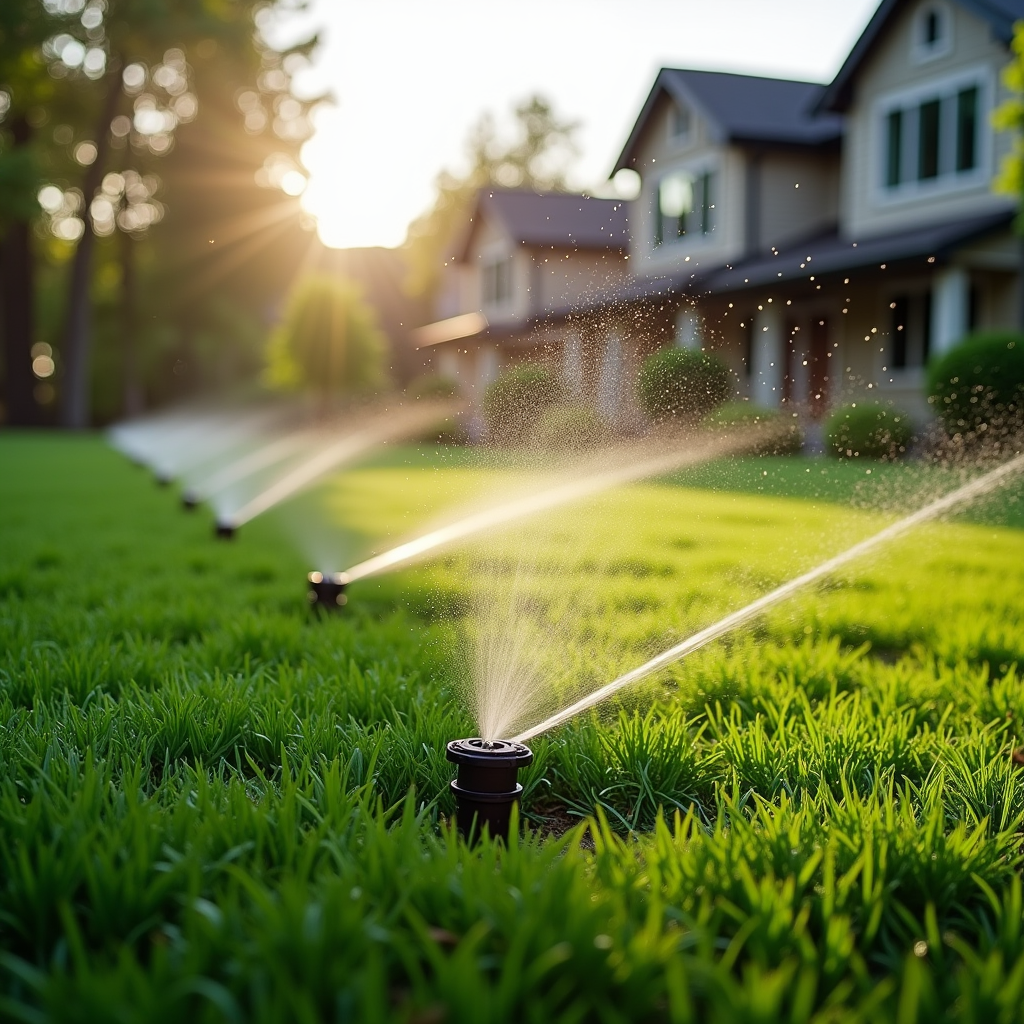Introduction
Maintaining a lush and vibrant lawn isn't just about mowing grass and watering it regularly. One of the most crucial aspects of effective lawn care is aeration. Aerating your lawn helps improve soil health, enhances water absorption, and promotes robust root growth, ultimately leading to a greener and healthier yard. In this article, we’ll dive deep into the best practices for aerating your lawn effectively, exploring everything from techniques and timing to tools and aftercare. Whether you're a seasoned gardener or a homeowner just starting on your lawn care journey, this guide will equip you with the knowledge needed to transform your lawn into a thriving oasis.
What is Lawn Aeration?
Understanding Lawn Aeration
Lawn aeration involves perforating the soil with holes to allow air, water, and nutrients to penetrate down to the roots. This process alleviates soil compaction, which can be detrimental to grass health. Think of it as giving your lawn a breath of fresh air!

Why Aerate Your Lawn?
Aerating your lawn has several benefits:
- Improves Air Exchange: Enhances oxygen levels in the soil. Enhances Water Infiltration: Reduces runoff and puddling. Facilitates Nutrient Uptake: Allows fertilizers and nutrients to reach roots more effectively. Encourages Root Growth: Promotes deeper rooting systems.
Types of Lawn Aerators
Core Aerators vs. Spike Aerators
When discussing aeration methods, it's crucial to understand the http://damienfoxj509.huicopper.com/the-benefits-of-native-plants-for-greensboro-landscaping difference between core aerators and spike aerators.
- Core Aerators: These machines remove plugs of soil from the ground. This method is highly recommended because it improves airflow significantly. Spike Aerators: These tools create holes in the ground by poking spikes into the soil. While easier to use, they can sometimes compact surrounding soil.
Manual vs. Mechanical Aeration Tools
Depending on the size of your lawn, you may choose between manual tools like hand-held aerators or mechanical ones such as ride-on aerators.
- Manual Tools: Great for small areas or spot treatment. Mechanical Tools: Suitable for larger lawns but typically require rental or purchase.
When Is The Best Time To Aerate Your Lawn?
Seasonal Considerations for Effective Lawn Care
Timing plays an essential role in successful aeration:
- Spring Aeration: Ideal for cool-season grasses; late spring is optimal when grass begins actively growing. Fall Aeration: This is often considered the best time overall as temperatures are cooler but still conducive for growth.
Soil Moisture Levels: A Key Factor
Before you start aerating, check if your soil is adequately moist. Overly dry or soggy conditions can hinder effectiveness. Aim for moist but not muddy soil!
Preparing Your Lawn for Aeration
Mowing Before You Start
Cutting your grass short before aeration allows better access for tools. Aim for 1.5 inches in height—this makes it easier for cores to be removed effectively.
Marking Obstacles on Your Lawn
Ensure that any hidden obstacles like rocks, garden beds, or sprinkler heads are marked clearly so you can avoid damaging them during the process.
How To Aerate Your Lawn Effectively
Step-by-Step Guide to Effective Lawn Aeration
Mow Your Grass Short (1 - 2 inches): As mentioned earlier. Water Your Lawn: 1 - 2 days prior ensures easy penetration. Choose Your Tool: Select either core or spike based on needs. Aerate in Rows: Overlap passes slightly to ensure complete coverage. Leave Cores on Surface: They will decompose back into the soil.Post-Aeration Care: What’s Next?
After aerating:
- Water thoroughly. Apply fertilizer if necessary. Keep foot traffic minimal until recovery.
Common Mistakes in Lawn Aeration
Not Knowing When to Aerate
One common blunder many make is not paying attention to seasonal changes or soil conditions—this can significantly affect results!
Over-Aerating vs Under-Aerating
Finding balance is key; too much aeration can stress grass while too little may not produce desired benefits.
Additional Tips for Successful Lawn Care
Incorporating Overseeding with Aeration
Pairing overseeding with aeration can yield fantastic results! The holes created during aeration provide excellent seed-to-soil contact ensuring higher germination rates.
Fertilization After Aerating
Applying fertilizer post-aeration allows nutrients directly into freshly made holes enhancing uptake by grass roots!
Frequently Asked Questions About Lawn Aeration
1. How often should I aerate my lawn?

Typically once a year is sufficient; however, high traffic areas might need biannual treatment.
2. Can I aerate my lawn when it rains?
It’s best not to; wait until conditions are dry enough but still moist enough to easily penetrate ground.
3. Will aerating fix my brown patches?
Not directly—the underlying cause must be addressed first (like pests or disease) then followed up by good cultural practices including proper watering/fertilization after appropriate interventions like overseeding/aerification!
4. Can I use my regular mower instead of renting an aerator?
No! Regular mowers do not create adequate holes nor alleviate compaction issues; investing in proper equipment leads toward success!
5. Is there any special maintenance required after I’ve aerated my lawn?
Yes! Keep foot traffic low initially until recovery occurs along with watering/fertilizing according recommended guidelines afterward!
6. Do different types of grass require different strategies for effective aeration?
Absolutely! Cool-season grasses thrive better in fall while warm-season varieties enjoy spring treatments depending upon local climate zones so research accordingly prior implementing actions!
Conclusion
Aerating your lawn may seem like just another chore on your never-ending list of household tasks—but trust us when we say that it's worth every bit of effort! With proper timing, technique selection, tool preparation, execution steps along with post-care plans followed correctly—your efforts will lead towards lush greenery thriving underfoot! By following these best practices for aerating your lawn effectively, you'll not only enhance its appearance but also create an environment where healthy growth flourishes year-round—making all those hours spent maintaining truly rewarding indeed!
Utilize this guide as a reference point through each season cycle ensuring optimal care continues moving forward—after all nurturing nature requires commitment dedication patience over time yet brings immense rewards beyond measure! Happy gardening!